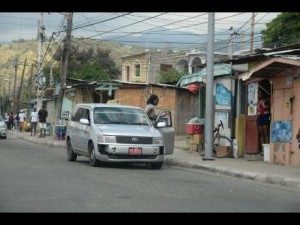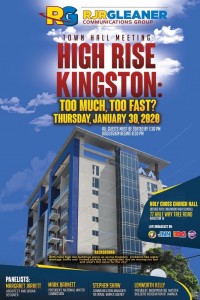
Development Dramas and Urban Issues
February 9th, 2020
Issues surrounding housing and land in Jamaica seem to go round and round, spinning in ever-decreasing circles, while those affected seek “solutions” that are rarely arrived at. Here are a few examples…
In Port Royal, the Government postponed plans late last year to relocate the long-standing (or sitting) squatter community in the town. Now, Member of Parliament Phillip Paulwell wants them to be incorporated into the town, with proper sewage and other facilities. They “might have encroached a little bit” on others’ land, he concedes, in order to build for their expanding families. But still…
“Now all of a sudden everybody want a little piece of Port Royal,” observed one resident of the illegal community sourly – referring to the cruise ship development, which may or may not impact residents in a positive way (one hopes it will). Many families living there are well-established and they have no intention of leaving. So, what next?
Of course, we know that squatter communities across the island are established, dismantled and used in other ways by our politicians, who always have one eye on potential voters. And elections are in the air.

Mona Commons is a long-established community adjoining a main road. Social work students at the University of the West Indies do work experience there, as well as in the troubled community of August Town on the other side of the campus. (Photo: Gleaner/Jermaine Barnaby)
Another example in the Kingston area is Mona Commons, a community directly opposite the University Hospital of the West Indies. Loud noises were made for years (nay, decades) about “relocating” the squatters, who set up businesses and put down roots long ago. At one time there was much talk about the Hospital losing its status as a teaching hospital, because of the noise, traffic, and general insecurity in its immediate vicinity. Then in 2017 the University of the West Indies (UWI) administration gave up and decided that they could stay; it announced confidently that the area would be “redeveloped” with the assistance of the National Housing Trust (NHT).
Since then, Member of Parliament Fayval Williams said (late last year, two years after the UWI announcement) that, well yes, she has seen plans, – those from up to six years ago, I would imagine – “but…”
So again, what next? Or is it another case of “Plus ça change, plus c’est la même chose”? The more things change, the more it’s the same thing? Clearly, the cost of “redevelopment” must be a factor, along with, dare I say, political considerations?
Then, the other side of the coin. There has been a great to-do recently about a certain pale-green townhouse and apartment complex on Upper Montrose Road in the “Golden Triangle,” an exclusive residential area of St. Andrew. The Supreme Court told the developer on January 21 that since he flouted some of the covenant and permissions received, he will need to rebuild and/or demolish the entire property, which is already occupied. The developer will likely lodge an appeal. Concerns have also been expressed about other pending developments in the uptown area – where townhouses are really nothing new, but apartment blocks literally add a whole new dimension to the issue of “development.”
A media forum on the current rash of high-rise buildings just to the north of New Kingston took place recently. I heard that for the most part, questions from the audience were not properly addressed by the panelists. Again, one seemed to be going in circles. The most important government agency (the National Environment and Planning Agency, NEPA) was a no-show. What were the outcomes of the town hall meeting? And again, what next?
What next? More of the “same thing”? Or will residents have to fight tooth and nail (and at great cost) through their lawyers to get the powers-that-be to do their job properly, which is what happened in the Upper Montrose case? In the case of squatters, and at the other end of the scale the better-off residents, the “relevant authorities” seem to prefer to simply – do and say as little as possible.
I think in emojis, sometimes (the curse of social media). This issue warrants the emoji with the “eye-roll,” as well as the one where a little person shrugs his/her shoulders, hands in the air.
It’s a “lose-lose.” And the vision of “livable communities” seems to be fading.
Tags: Fayval Williams, Golden Triangle, high-rise buildings, housing, Kingston, Mona Commons, National Environment and Planning Agency, National Housing Trust, NEPA, Phillip Paulwell, Port Royal, Supreme Court, sustainable development, University Hospital of the West Indies, University of the West Indies
The Gleaner reserves the right not to publish comments that may be deemed libelous, derogatory or indecent.
To respond to The Gleaner please use the feedback form.
- We Are the Zoomers
- Living Online with Humans and Birds: NAOC 2020
- Human Trafficking and the Problem of Public Education
- Down Memory Lane
- Are We Ready to Recover from COVID-19?
- Road Safety Matters: Is Your Vehicle Safe?
- Sexual Harassment, Me Too, and the Minister’s Disturbing Giggle
- The Vulnerable Senior Citizens, Private Care Homes and COVID-19
- A Muddle Over Masks
- Here is Something Life-Saving You Can Do: Give Blood!



